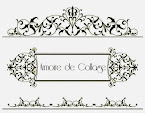What better way to toast the New Year than with a vessel that has become synonymous with toasting…the stein. Abbreviated from either the German word Steingut, which means ‘stoneware,’ or Steinzeugkrug, meaning stoneware jug or tankard, stoneware (a heavy pottery material) was the most commonly used material for beer mugs. Later the use of porcelain and glass were introduced, but regardless of the material, a stein refers to a container to drink beer with, that most likely has a hinged lid.
The stein originated around the 14th century. The spread of the bubonic plague throughout Europe forced Germany to pass a law stating that all beverage containers needed a lid to prevent diseased fleas from getting into the beer. The lids were usually made of pewter and equipped with a lever on the same side as the handle, so one could hold the mug and open and close the lid with a single hand.
Although stoneware allowed for the use of molds for mass production, the weight was significant when a stein was filled to the brim. The latter half of the 19th century saw the introduction of glass which enabled artistic touches like overlays, etchings, and personalizing with monograms. But the porcelain mugs are among the most magnificent. Porcelain molds could produce unique shapes and characters, and could be hand painted in greater detail. Renown for its marvelous porcelain, the German stein pictured, is a magnificent example of high-quality porcelain, beautiful hand-painting detailing a historical event, and painstaking calligraphy providing the significant details. The lithophane bottom is a very translucent, molded porcelain depicting a couple in period clothing, and is most unique for a stein.
Unfortunately I was unable to do the research on the event portrayed, as the stein was sold to a collector during the holidays. This stein will truly be the bellwether in a collection with its beautiful artist rendering, detailed horse and rider atop the pewter lid, and elaborate lever. The number of horses hooves in the air originally indicated how the rider died…two front raised hooves signified that the rider died in battle; one raised hoof meant that the rider was wounded in battle, possibly dying of the wounds later; all four hooves on the ground…the rider survived all battles. American monuments, however, have deviated from this tradition. Without thoroughly researching this particular stein, we can only deduce that it was a commemorative piece produced in 1906 (date painted on stein), about an historic military figure who might possibly have died in battle.
Steins usually come in half liter or a full liter sizes, but steins made for decorative or collectible purposes may deviate from these sizes. Although a niche market, many were purchased for gifts during the holiday season.
Photos by Collage
Subscribe to:
Post Comments (Atom)




No comments:
Post a Comment